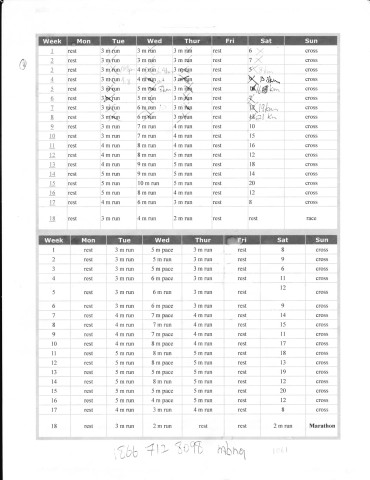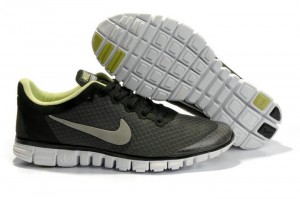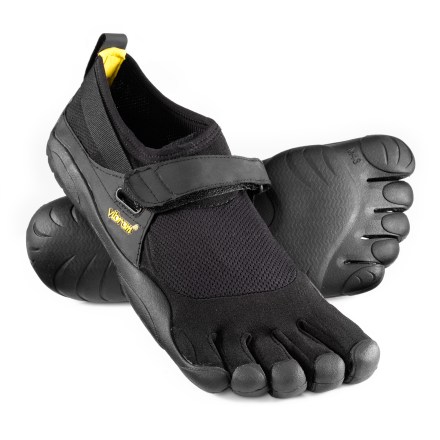Quarter Marathon
Reflections up until this point
Even though I do a 10km run every week and my limit is really 21km, a real marathon with other participant is very different from a solo run. To start, my heart rate was at 90bpm at rest before the race, which is above the normal 66bpm that I usually have. Indicating that adrenaline has been coursing through me, even though my mind feel at ease and there’s a general lack of anxiety. Compared to how I used to feel before my heat in a dance competition, this anxiety is peanuts, but it matters, because it’s burning off energy that I need in a full Marathon environment. For a quarter marathon, it doesn’t matter. I wanted to do the Terry Fox run because I’ve ran into a plateau in my training. Here’s my run schedule for the past 3 months of training.

Every time I fail the weekend Sunday run, I will repeat the whole week schedule until I can do it. Or I’ll take a week off to heal my body and attempt the full week schedule again. I find that my body does not heal as fast as the author of this schedule assumed and must take a week off completely in order to recover. Everyone’s body is different and if I learned something after 5 years of running and that is to never push your body past its limit too much. The last time I did that, my knee ended up hurting for 3 months.
I am glad that I was able to maintain the 10km/hr pace which is essential to completing the full marathon. Problem is, my heart and breathing was near their limit near the end of my run at 58minutes 23 seconds. Which indicate that between cardio, bone-tendon wear resilience and muscle endurance, I am currently cardio blocked, because up until this point, I’ve been running at the most leisurely pace that I can in order to build up my resistance and lessen the wear and tear on my tendons. This has some downside as I later found out while researching the subject.
The human body, according to some experienced Marathon runners, have a limit at 3 hours 30 minutes where a person will hit a wall because there’s only so much energy the body can store at one time before switching to burning fat and other less efficient fuel. The supply will not be sufficient to offset the energy required for running once this wall is reached and the deterioration in body wear and tear will accelerate. This changes everything because in order to complete a marathon, a runner must maintain a 10km/hr speed at all time so as to not hit that 3hr 30min wall.
Techniques employed
I cheated near the end of the Marathon when the wind blew against the running direction by kiting behind the taller and bigger runners. This reduced wind resistance and pretty much annoyed the hell out of them, because they can hear me and they know that I am too close for comfort. This dashing in and out from behind different runners lasted until I found one big fella who had a huge headphone on. It was harmonious from then on. I guess an advantage I didn’t consider before and may have contributed one or two minutes to my running time as it allowed me to rest up before embarking on a final sprint.
The next is what I call toe running and goes by several other name such as barefoot running. It is explained in the video below
I’ve been training for barefoot running for the past 3 years and slowly increasing the distance I can run by landing near the front of my foot. I am doing this because I realized that at one point that my body have reached a limit after 10km with landing on the heel. No matter how much I run, my knee will always act up near that limit, probably because of the destruction I’ve wrecked upon it for 10 years straight with competitive ballroom dancing. It is a fact that I have to admit and work around with. So I started running on my toes which, incidentally strengthened all the small muscles in my feet that is necessary for dancing as well.
The idea to run this way first came to me when reading about an author who lived with wolves. His observation on the efficiency of their running movement and some research on wolf anatomy led me to the conclusion that the most efficient and the least damaging way to run is the way wolves run. It uses muscles to offset bone’s need to participate in the run. At first, I can only run for 15 minutes, my calves and the muscles around the arch of my feet would be sore for 3 days right after the run, but with each year of phasing in, the endurance increased until finally, I never get sore muscles anymore. It really helps reducing any vertical up and down movement and it is the way our ancestors naturally ran before the invention of shoes. For now, I use the Nike free 3.0 as my minimalistic training shoes before switching to Vibram’s barefoot shoes. Here they are:


I also mix in the Cliff Young shuffle running technique
They both focuses on efficiency of movement and are techniques that compliment each other. Except it’s a little bit ugly to observe the runners using such techniques. What I care about is longevity of being able to run, because I know that the moment the cartilage in my knee gets worn out to the bone, that’s when I won’t be able to move anymore and there’s no way to replace these cartilage except for some expensive and painful surgery and even then, you still can’t run. For me, it’s a matter of whether or not I’d be able to complete a full marathon before it happens and potentially, an iron man. So efficiency is king.
And that’s it for the full report at the 1/4 point of the Marathon. With winter approaching, I will only be able to maintain my performance until I can expand again next summer. So I think it will be 2 more years before I can complete my first Marathon. Another 3 for bike training and 3 for swimming. I am on my way to iron man at 40.






Leave a Reply